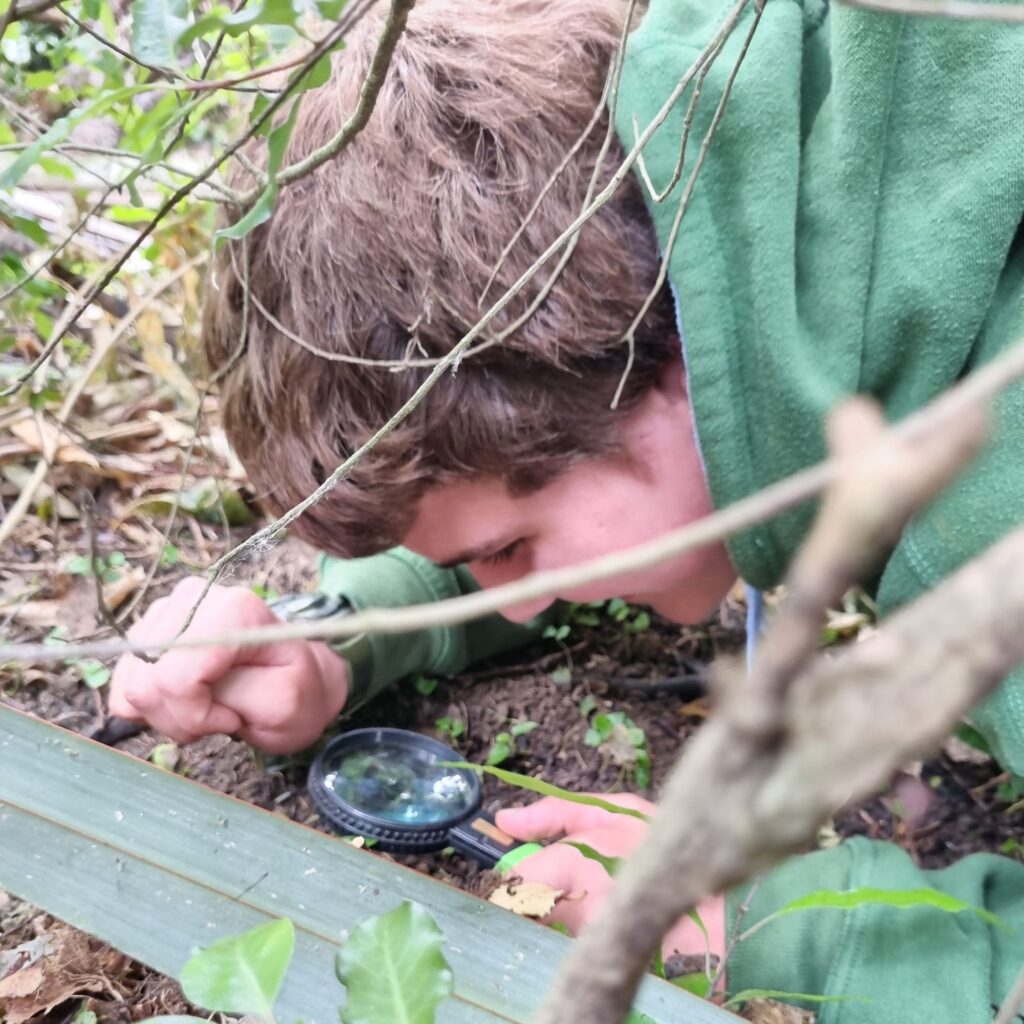Enviroschools and Junior Landcare joined up again in term 4 to give the opportunity for rangatahi to become scientists in a Bioblitz at Grovetown Lagoon.
Biodiversity brings to mind thoughts of remote, wild places full of extraordinary animals and plants. While wild areas are rich in biodiversity, we can easily overlook the variety of species that surround us every day in easy to reach, local spaces - even on the school playing field. Did you know that New Zealand has 2000 species of spiders and you are likely to find one million spiders in one hectare of paddock land! Angela, Wendy (NZ Landcare), Rosanne and Justine (Wetland Warriors) welcomed rangatahi from Queen Charlotte College and...
Read More Earlier in the year, Tua Marina and Springcreek Schools teamed up to replant a section of the Kahikatea Reserve. This amazing restoration project was started 20 years ago. The aim being to return the land to original ngahere and water ways. A group sitting quietly counting birds When planting the damaged section, we could hear numerous birds in the maturing ngahere beside us. Of course we also had piwakawaka ducking and diving around us as we disturbed the insects that piwakawaka love to eat. We came up with the idea of returning each year to do a bird count. Both in the 20-year-old section and the newly planted section. This would measure...
Read More Our term two Sustainable Action Ideas newsletter explores the Enviroschools Guiding Principle of Respect for the Diversity of People and Cultures.
It highlights some up coming awareness dates that support this guiding principle as well as shares ideas to celebrate other cultures in your school or centre. There are also a number of workshops happening this term. Click here to access our online Padlets to view this newsletter and previous ones....
Read More Healthy bird populations can indicate that the environment is healthy. We know lots about endangered native birds in the bush, but we don’t always know what’s happening in the populations of all the birds around us, particularly in urban and garden environments. That’s why we need you to help us count them. https://gardenbirdsurvey.nz...
Read More The flightless takahē (South Island takahē; Porphyrio hochstetteri), is the world’s largest living rail (a family of small-medium sized ground-dwelling birds with short wings, large feet and long toes). The North Island takahē (moho; P. mantelli) is unfortunately extinct. Takahē have special cultural, spiritual and traditional significance to Ngāi Tahu, the iwi (Māori tribe) of most of New Zealand’s South Island. Ngāi Tahu value takahē as a taonga (treasure) and they continue to act as kaitiaki (guardians) of the takahē by working with DOC to protect this precious species. https://www.doc.govt.nz/nature/native-animals/birds/birds-a-z/takahe/ Image source: Department of Conservation NZ...
Read More This term our Sustainable Action Ideas newsletter explores ways to get outdoors and ideas for a sustainable Christmas.
Click here to access our online Padlets to view this newsletter and previous ones....
Read More The students at Richmond View School became Botanists this term as they explored the classification of native plants on the Taylor Awa.
People have always given names to things that they see, including plants and animals. So, of course most of us turn to names as the first form of classification. It was a scientist, Linnaeus, that first developed a hierarchal naming structure (of 7 parts no less). This conveyed information about what a living thing was and also its closest relatives. Earlier this term, if you happened to be walking your dog down the Taylor Awa, you may have come across Richmond View School students studying the Tui to Town plantings. Their inquiry for...
Read More Take a look at our list of ways that your students could take action towards sustainability this term.
Click here to link through to the list in our Enviroschools Marlborough google drive....
Read More Picton School's Kaitiaki Group visited the Shakespeare Bay estuary for NZAEE Seaweek.
Picton School's Kaitiaki group were invited by Port Marlborough in conjunction with Cawthron Institute to visit the Shakespeare Bay estuary as a focus for NZAEE Seaweek in March. The Kaitiaki group were smaller in stature and younger in age than usual as the group's senior students were away on camp. However, their levels of excitement and enthusiasm were just as high! The Kaitiaki group and Cawthron scientists, smiling in the rain! Despite the rainy day, scientists from Cawthron had set up a range of activities to help the group study the estuary. Anika, Dana and Robyn each took a group...
Read More 








